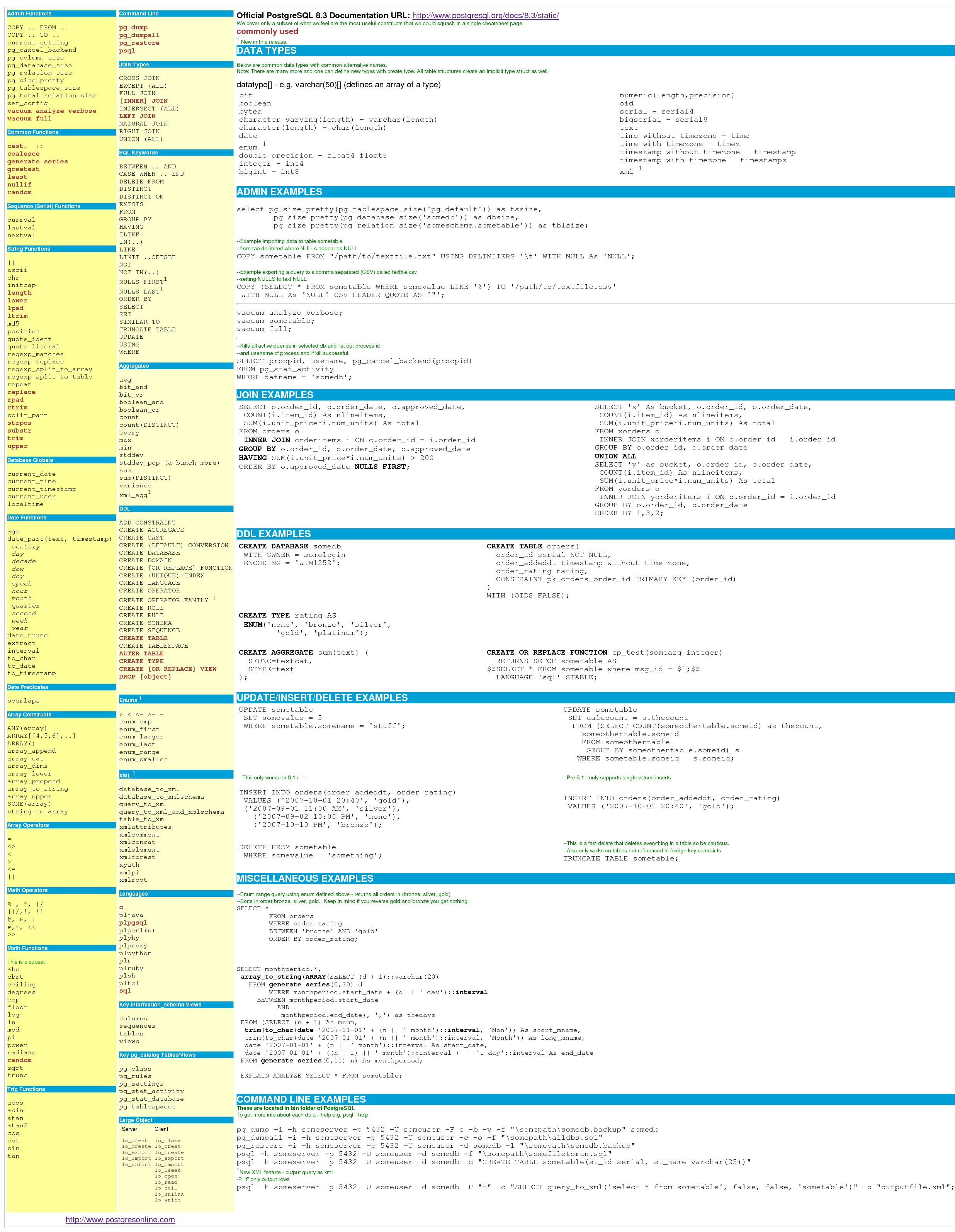

Our most popular (& controversial!) article to date on the Uber Engineering blog in 3+ yrs. We use its excellent built-in full-text search, which has helped us avoid needing to bring in a tool like Elasticsearch, and we've really enjoyed features like its partial indexes, which saved us a lot of work adding unnecessary extra tables to get good performance for things like our "unread messages" and "starred messages" indexes. As a result, we were able to delete a bunch of custom queries escaping the ORM that we'd written to make the MySQL query planner happy (because postgres just did the right thing automatically).Īnd then after that, we've just gotten a ton of value out of postgres. We didn't have to do any real customization (just some tuning settings for how big a server we had), and all of our most important queries were faster out of the box. We ended up getting so frustrated that we tried out PostgresQL, and the results were fantastic.
#Postgresql similar manual#
Issues ranged from bad collation defaults, to bad query plans which required a lot of manual query tweaks. However, we found that even though we were using the Django ORM for most of our database access, we spent a lot of time fighting with MySQL. Zulip started out as a MySQL project back in 2012, because we'd heard it was a good choice for a startup with a wide community. That’s all folks! Thank you for reading till the end.This is re-post from my blog.We've been using PostgreSQL since the very early days of Zulip, but we actually didn't use it from the beginning. Conclusion PostgreSQL extension smlar can be used in systems where we need search similar objects, like texts, images, videos. Here you can see all results in raw format. Test=# SELECT smlar(''::integer)Īdded sorting did not complicate query execution. Let’s test instaled extension: $ psql -d test PGC_USERSET, PGC_S_SESSION ,GUC_ACTION_SET, true) To this (delete last argument) set_config_option("smlar.threshold", buf, PGC_USERSET, PGC_S_SESSION ,GUC_ACTION_SET, true, 0) In file “smlar_guc.c” on line 214 change call set_config_option("smlar.threshold", buf,

On PostgreSQL 9.2 this extension should build without problem, for PostgreSQL 9.1 and earlier you need to make a little fix.
#Postgresql similar install#
First of all, we need install it (PostgreSQL should be already installed): git clone git:///smlar
#Postgresql similar how to#
Let’s look how to work with this extension. Smlar extension for PostgreSQL Oleg Bartunov and Teodor Sigaev developed PostgreSQL extension, called smlar, which provides several methods to calculate sets similarity (all built-in data types supported), similarity operator with indexing support on the base of GiST and GIN frameworks. TF/IDF metric avoids these problems to calculate the similarity: where Now it would be great to use this knowledge in practice.


 0 kommentar(er)
0 kommentar(er)
